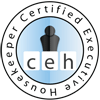The terms “mold” and “mildew” are interchangeable in common use because the same fungus can affect many different surfaces. The term that’s used depends on the affected surface. Clothing, footwear and bathroom surfaces are said to be mildewed when colonies of fungi appear on them, while the term mold is most frequently used for fungi growth on building materials, such as on and inside the walls of homes.
Molds have the potential to cause health problems. Molds produce allergens, irritants, and in some cases, potentially dangerous substances called mycotoxins. Inhaling or touching mold or mold spores may cause allergic reactions in sensitive individuals.
Mold can be highly difficult to eradicate from building components because lack of airflow behind walls allows humidity levels to remain elevated for extended periods of time. Once mold attacks moist wood, insulation or wallboard, the affected components must be removed and replaced once the source of moisture has been identified and corrected. And these sources are many:
- Leaks in water supply plumbing or drains
- Inadequate attic ventilation resulting in condensation in cold climates
- Leaky roof
- Poor drainage or faulty construction outside, such as defects in gutters, gutter fascia boards, downspouts or earth grading around the home that prevents drainage of water away from the foundation
- Condensation in and around duct work during summer in homes with central air conditioning
- Incorrectly installed insulation in walls, floors or attics, resulting in condensation
- Faulty installation of synthetic stucco finishes on the outside of the home.
If allowed to permeate much of a home, mold can cause tens of thousands of dollars’ worth of damage. In extreme cases, building officials have ordered homes destroyed after ruling that complete mold mitigation was not possible.
Small outbreaks of mold can be treated by washing the surface with a solution containing one part chlorine bleach to four parts water, and then wiping the surface completely using clean water. Ensure adequate ventilation while working with bleach by running a fan nearby. Alternatively, you can use a solution of water and borax powder. Borax, commonly sold as a laundry detergent booster, is safer for the environment, emits much less odor and will help prevent recurrence of mold in the short term.
Keep the fan running after you’re finished working to ensure the affected surfaces dry completely. You can use a stand or box fan directed at the work site, but be certain to place the fan on a dry section of the floor to reduce shock hazards. Once done, be sure to investigate why the mold formed and take steps to correct the problem, or mold may recur in that location.
In cases where mold infestation is large – the U.S. Environmental Protection Agency defines this threshold at 10 square feet (0.93 m2) or larger – you may wish to consult a mold-remediation contractor. The bigger the problem, the more likely it is to recur.
Like the evil creature in a horror movie, mold will come creeping back into your home if you clean it up but don’t take steps to reduce humidity and moisture. For more information on this topic, please see the EPA article, ”What You Need to Know about Mold.”









